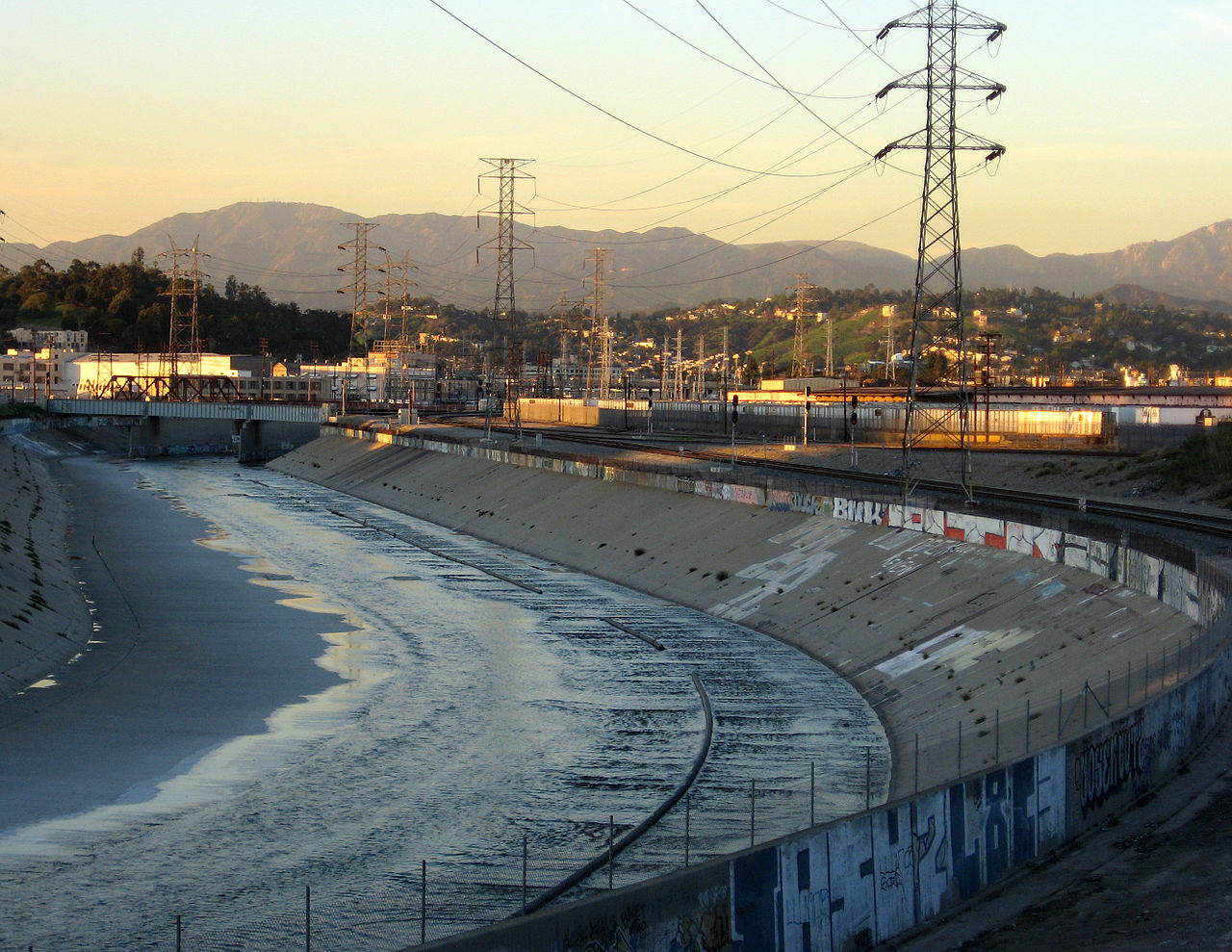Definition
River training refers to the structural measures which are taken to improve a river and its banks. River training is an important component in the prevention and mitigation of flash floods and general flood control, as well as in other activities such as ensuring safe passage of a flood under a bridge. For flash flood mitigation, the main aim is to control the water discharge regime in the watercourse by limiting its dynamic energy, thereby controlling the morphological evolution of the watercourse. More specifically, the river channel may be deepened allowing it to carry more water. Involves the moving of mud and sand along a river course until the bends of the river are filled and its main channel is excavated sufficiently enough to contain the volume of water. Channel widening can rehabilitate regulated watercourses and reduce the extent of streamed erosion and the risk of flooding. Widening the river gives it the opportunity for self-dynamic development of a typical equilibrium. River training structures can be classified into two main categories: transversal protection structures and longitudinal protection structures(Shrestha, A. B. et. al., 2012, p. 60).
Co-benefits and impacts
Apart form making river navigable for ships, etc., river training measures also reduce sediment transportation and thus minimize bed and bank erosion (Shrestha, A. B. et. al., 2012, p. 60)).Conditions
There are a number of types of river training structure. The selection and design of the most appropriate structure depends largely on the site conditions (Shrestha, A. B. et. al., 2012, p. 60).Definition (GR)
Η διευθέτηση υδατορεμάτων αναφέρεται στα τεχνικά μέτρα που λαμβάνονται για τη βελτίωση του ποταμού και των όχθεων. Η διευθέτηση υδατορεμάτων αποτελεί σημαντικό έργο για την πρόληψη και μείωση των έκτακτων πλημμυρικών φαινομένων και γενικότερα αποτελεί ένα σημαντικό έργο για τον έλεγχο των πλημμύρων. Επιπλέον η διευθέτηση υδατορεμάτων συμβάλει αποτελεσματικά και σε άλλα συμβάντα, όπως αποτελεί η ασφαλή διέλευση της πλημμύρας κάτω από τη γέφυρα. Για την μείωση των πλημμυρικών φαινομένων, ο κύριος στόχος είναι ο έλεγχος του συστήματος απόρριψης νερού στο ρεύμα του ποταμού, περιορίζοντας τη δυναμική του ενέργεια, με αποτέλεσμα να είναι ελεγχόμενη η μορφολογική εξέλιξη του ποταμού. Πιο συγκεκριμένα, το κανάλι του ποταμού μπορεί να εμβαθύνει περισσότερο, επιτρέποντάς του να μεταφέρει περισσότερο νερό. Συμπεριλαμβάνοντας τη μετακίνηση της λάσπης και της άμμου κατά μήκος του ποταμού, μέχρις ότου να διαβρωθούν οι στροφές του ποταμού και το κύριο σώμα του ποταμού, να έχει εμβαθύνει αρκετά ώστε να μπορέσει να συγκρατήσει τον επιπλέον όγκο των ομβρίων υδάτων. Η διευθέτηση υδατορεμάτων, μπορεί να βοηθήσει στην αποκατάσταση των υδάτινων ροών, όπως και να μειώσει την έκταση των διαβρώσεων και τον κίνδυνο πλημμύρας. Η διευθέτηση υδατορεμάτων δίνει την ευκαιρία για μία αυτοδυναμική ανάπτυξη της ισορροπίας στο περιβάλλον. Οι διευθετήσεις υδατορεμάτων μπορούν να ταξινομηθούν σε δύο κύριες κατηγορίες: εγκάρσιες δομές προστασίας και διαμήκεις δομές προστασίας(Shrestha, A. B. et. al., 2012, p. 60).
Co-benefits and impacts (GR)
Εκτός από τη δημιουργία ποταμών για την ασφαλή ναυσιπλοΐα κ.λπ., τα μέτρα διευθέτησης υδατορεμάτων επίσης μειώνουν τη μεταφορά των ιζημάτων και έτσι ελαχιστοποιούν τη διάβρωση της κοίτης και των όχθεων (Shrestha, A. B. et. al., 2012, p. 60).Conditions (GR)
Υπάρχουν διάφοροι τύποι διευθέτησης υδατορεμάτων. Η επιλογή και ο σχεδιασμός των δύο αυτών τύπων, εξαρτάται σε μεγάλο βαθμό από τις συνθήκες που επικρατούν στην περιοχή (Shrestha, A. B. et. al., 2012, p. 60).Case studies
-
Οριοθέτηση βόρειου τμήματος ρέματος Χρυσοβαλάντου έως όρια ΓΠΣΧ Ηρακλείου, Περιφερειακή Ενότητα Ηρακλείου, Κρήτη, Ελλάδα
-
Έργα διευθέτησης και αντιπλημμυρικής προστασίας στον ποταμό Ταυρωνίτη, Δήμου Πλατανιά, Περιφερειακής Ενότητας Χανίων, Κρήτη, Ελλάδα
-
Διάνοιξη κοίτης και διαμόρφωση πρανών ποταμού Κερίτη σε Αλικιανό και Φουρνέ, αντίστοιχα, Περιφερειακή Ενότητα Χανίων, Κρήτη, Ελλάδα
-
Excavations of Schwarztonnensand, Hamburg (20th c.)
-
Continuous deepening of the tidal Elbe to 13,5m under MTnw with time, Tideelbe, Hamburg, Schleswig- Holstein, Lower Saxony (20th c.)
-
Αντιπλημμυρική Προστασία Παγκρήτιου Σταδίου, Περιφερειακή Ενότητα Ηρακλείου, Κρήτη, Ελλάδα
-
Οριοθέτηση πεδινής κοίτης Γιόφυρου, Περιφερειακή Ενότητα Ηρακλείου, Κρήτη, Ελλάδα
-
Μελέτη Οριοθέτησης, διευθέτησης και εξυγίανσης του Ποταμού Γιόφυρου, Περιφερειακή Ενότητα Ηρακλείου, Κρήτη, Ελλάδα
-
Mελέτη οριοθέτησης με έργα διευθέτησης και Έργα αντιπλημμυρικής προστασίας ρέματος Πλατύ Δήμου Αγίου Βασιλείου, Περιφερειακή Ενότητα Ρεθύμνου, Κρήτη, Ελλάδα
Last modified: July 2, 2020, 8:21 p.m.


 Ελληνικά
Ελληνικά

